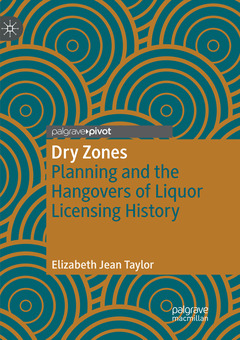Description
Dry Zones, 1st ed. 2019
Planning and the Hangovers of Liquor Licensing History
Author: Taylor Elizabeth Jean
Language: English
Approximative price 58.01 €
In Print (Delivery period: 15 days).
Add to cartSupport: Print on demand
Description
/li>Contents
/li>Biography
/li>Comment
/li>
Using new archival research and historical GIS techniques to book map the rise and influence of local level controls on alcohol in Victoria
Offers a new perspective on place-based alcohol controls by arguing that the temperance movement of the late 19th and early 20th century used nascent planning laws to legitimize local popular political power, and the control not only of alcohol but of land use and disorder more broadly
Identifies the hangovers of temperance and local option laws: legacies for the emergence of land use zoning, and for alcohol and land use controls in Victoria today



